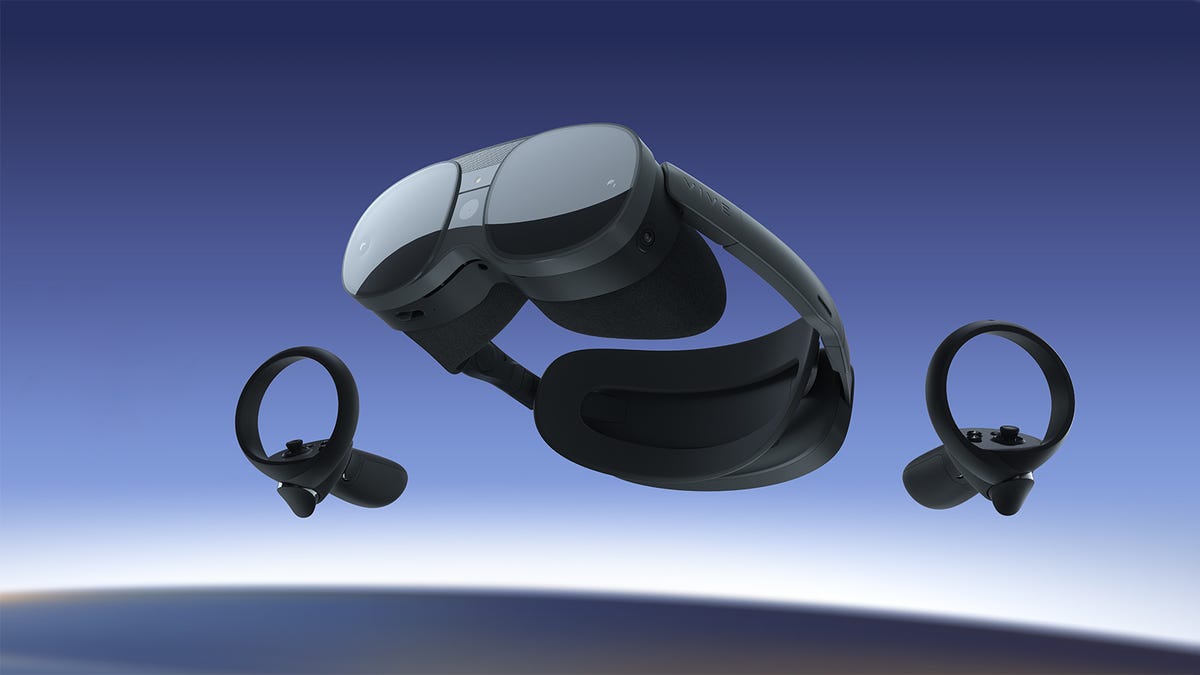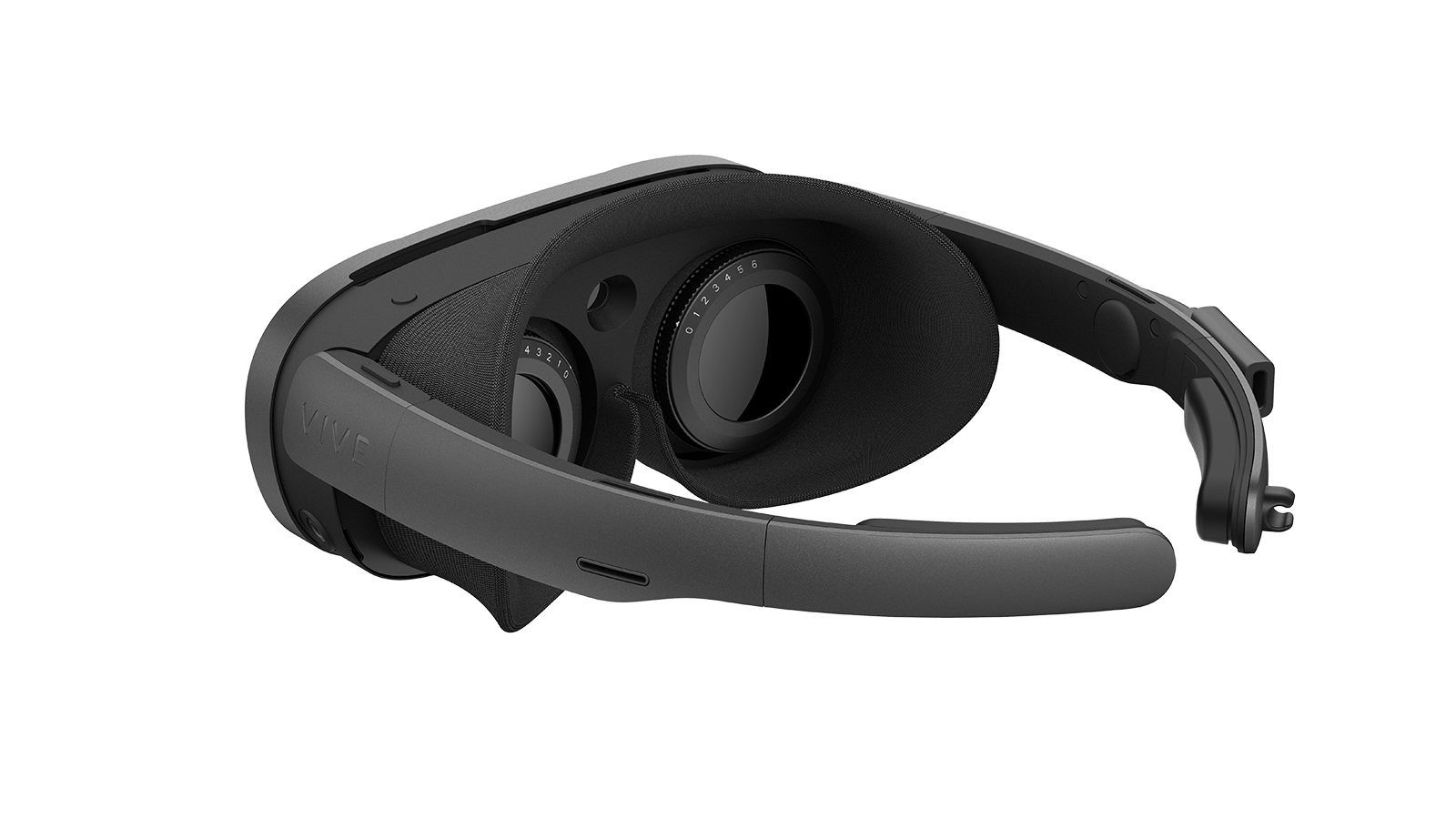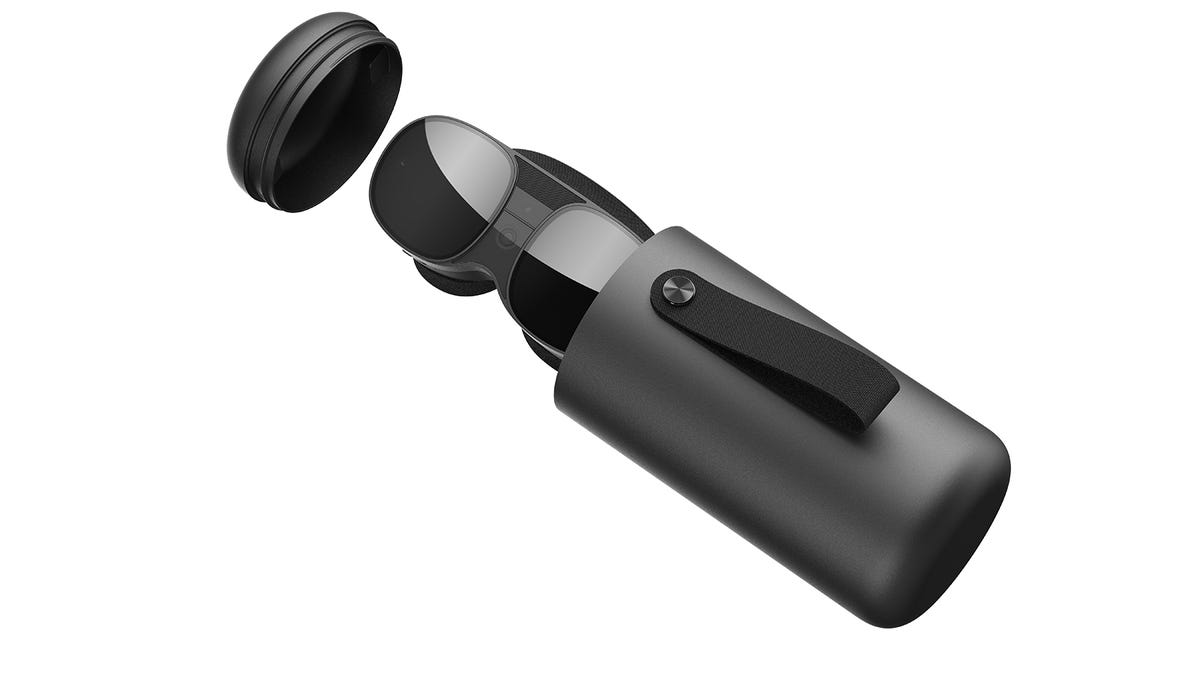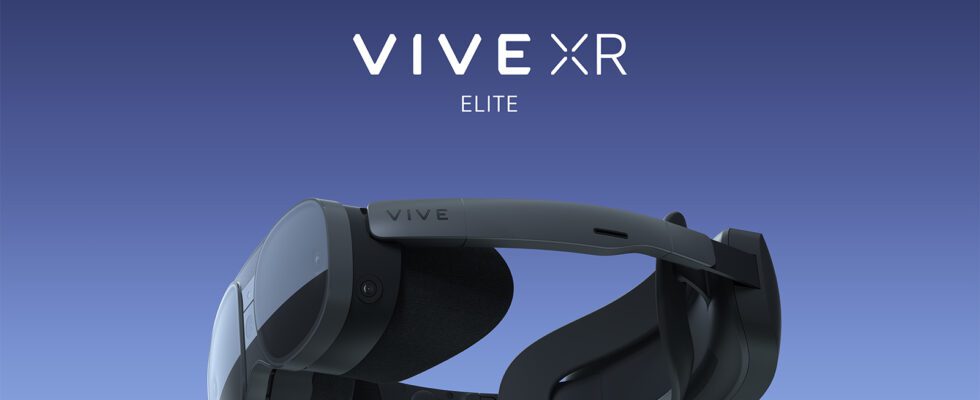The new headset features a modular design that lets you customize its battery life, weight, and how it’s worn. Picture: HTC.
When Meta unveiled its Meta Quest Pro headset, the company clarified that the headset was aimed more at businesses than the general public. At 1800 € the helmet (starting price), it is easy to understand. For consumer customers, Meta evokes the Quest 2 instead.
HTC is doing the exact opposite with the launch of its VIVE XR Elite headset, a high-end headset designed also for the general public. It was also presented at CES 2023.
HTC VIVE XR Elite hardware
The physical design of HTC’s new flagship leans heavily on the bezel aesthetic of the HTC VIVE Flow headset. However, while that headset was designed primarily for media consumption, the VIVE XR Elite is designed to, well… do it all.
HTC has really stuck to the “all-in-one” concept by equipping the device with enough performance hardware to handle everything from mixed reality apps seen through its color RGB cameras, to casual VR games. or intense, through the experience of social spaces in the new VIVERSE, HTC’s own “version of the metaverse”.

The headset comes with two controllers and a “headset battery holder”. Picture: HTC.
This level of versatility requires two things: powerful hardware and a modular design.
When it comes to hardware, the VIVE XR Elite has some of the most impressive specs to date in the consumer VR market. Although it weighs only 625g in its heaviest configuration, the device offers a 110-degree field of view, 4K resolution, 90Hz refresh rate and adjustable lenses that can even fit most users who would normally need corrective lenses in other helmets. This goes well beyond the usual inter-pupillary distance (DIP) adjustment that most headsets are limited to, which is also the case.

You can spot what are probably diopter indicators on the outer adjustment rings surrounding the lenses to help you adjust your vision to suit your optical prescription. Picture: HTC.
Tracking capabilities are just as important as the visual prowess of the headset. For this task, HTC included four wide-field-of-view cameras to provide “exceptional 6DoF spatial accuracy [6 degrés de liberté]”, a depth sensor, hand tracking, and sensors that can detect finger movements on the controllers. The VIVE XR Elite also supports hand tracking or even tracking physical objects, such as a baseball bat or tennis racket.
To better accommodate the wide range of games, activities, and applications this hardware can support, HTC has designed the VIVE XR Elite to be modular. While it looks a lot like offerings like the Quest Pro with its “Battery Cradle” attached, you can also disconnect the battery and wear the device like a pair of glasses, as seen above. This allows for more casual, less motion-intensive uses, like watching videos on an airplane, attending virtual meetings in the office, or just kicking back with the occasional game on the couch.

The aforementioned “Battery Cradle”, which can be hot-swapped, or detached to allow the device to be worn like glasses. Picture: HTC.
When not connected to the included Battery Cradle, which is capable of 30W fast charging, VIVE XR Elite can also be powered by USB power sources, such as external chargers or airplane seats .
This same USB-C connection also allows gamers to use the XR Elite to play VR content on PC from VIVEPORT and Steam. Or, if you prefer not to use cables, the headset can be connected to a PC wirelessly via Wi-Fi 6E for low-latency PCVR gaming, without tethering to your desktop or gaming laptop.
HTC VIVE XR Elite Software

The VIVE XR Elite’s modular design and collapsible temples allow it to fit into this compact cylindrical case. Picture: HTC.
To harness all of this hardware, HTC plans to launch the VIVE XR Elite alongside a host of software and services that can take advantage of it. Among the software planned by the company for its launch window are:
- The creation of a new “customizable social space” which will serve as a virtual home for the bearer. Through this space, users will be able to access their games and applications, visit “new worlds”, and access HTC’s VIVERSE virtual universe.
- The VIVERSE itself, which will leverage the VRM open standard to allow 3D modeling platforms like Sketchfab and other partners to create free 3D assets that users can import into their virtual home.
- A series of virtual tales, starting with “The Little Prince” later in 2023.
- Partnerships with media companies for avatar props and music experiences.
- A collaboration with Lamina1 to create an “open metaverse ecosystem for society” to facilitate “cross-world, cross-platform asset distribution” for things like avatars, clothing, artwork, and more.
- Over 100 games and apps coming to the VIVEPORT store in time for the launch window, including titles like Figmin, Hubris, Yuki, Maestro, Les Mills Body Combat, and more.
Price and availability
As I mentioned at the beginning of this article, HTC has every intention of making the VIVE XR Elite accessible not only to large enterprises, but also to the average consumer. While it’s by no means a budget device, its starting price of €1200 puts it well below the €1800 for Meta’s Quest Pro headset, and barely more than a laptop. quality gaming laptop or, for that matter, a decent desktop graphics card.
If you think the HTC VIVE XR Elite is your next headset, be aware that shipments should begin at the end of February.
The company also said it plans to offer bundles that include the headset and games or XR content in select geographies, as well as direct sales for business users later this year.
As for the future, HTC talked about a “Face and Eye Tracker” unit planned for 2023, but didn’t give any further details on the planned addition.
For further
Source: ZDNet.com
